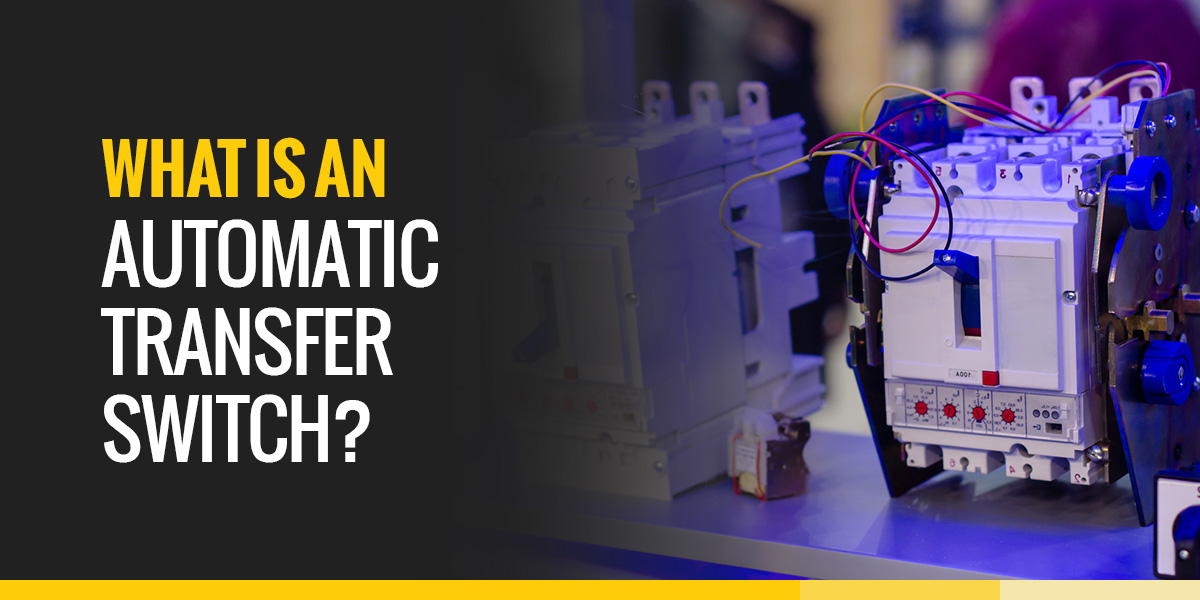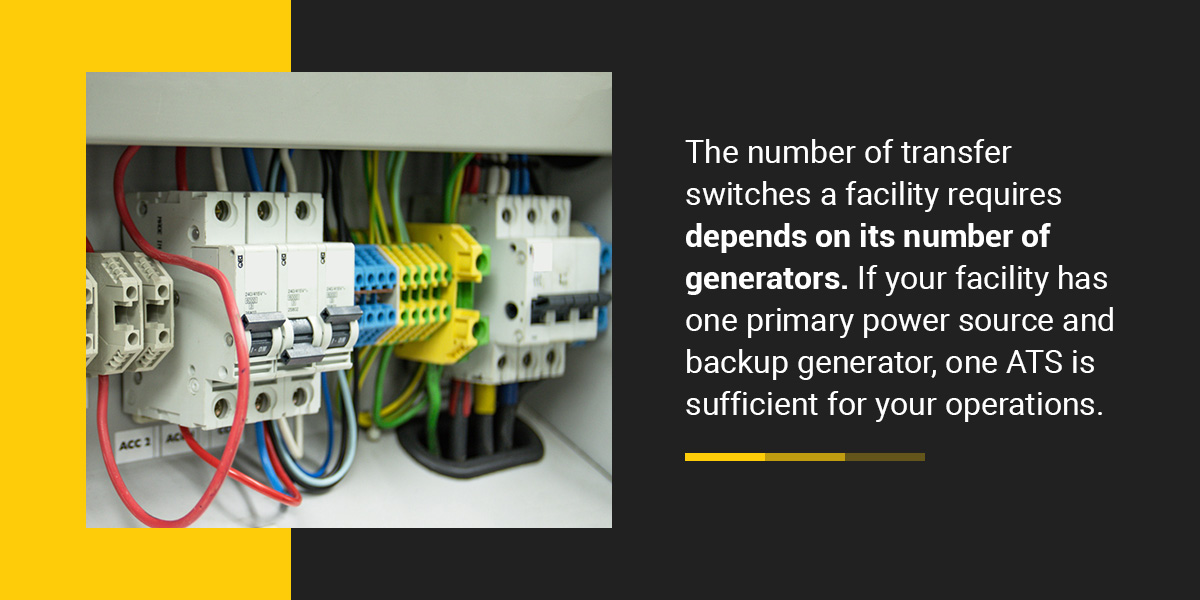

A transfer switch is a device that connects equipment to backup power when a primary power source fails. The function of an automatic transfer switch (ATS) is to ensure machines continue operating during power outages or failures. An ATS is an essential part of all functional power systems.
An automatic transfer switch helps an electrical load connect to a backup generator when it needs power. In the event of a power failure or outage, an ATS senses the lack of electricity from the primary power source. The ATS then switches the load’s power connection from the primary source to the backup generator.
Electric operations depend on the automatic transfer switch during power outages because this essential device is the only component that will allow the machines to continue working when the main power source fails. Installing an ATS for each functional power system setup is crucial because it prevents machine downtime.
A generator transfer switch works as a self-acting electrical relay, transferring electricity from power sources to equipment. The device connects equipment to primary power supplies when electricity is available and activates the generator when primary sources stop delivering electricity. When the primary source regains power, the ATS turns the generator off and returns the equipment load to the regular power supply.
Automatic transfer switches operate on dedicated control logic, which is typically microprocessor-based. It continuously monitors each system’s primary and alternate power source frequency and voltage. Their default connection is to the utility power source. They only connect to the backup power source when the primary source fails or an operator forces it to switch to a generator.
An ATS can sense when utility power returns and switch from backup to primary power. Its constant power system monitoring allows it to detect when each source is at the required frequency and voltage. While automatic transfer switches typically operate automatically, operators can also use manual and non-automatic operation modes.
A manual operation involves pulling a handle or pressing a button to initiate a power transfer. A non-automatic operation involves rotating a switch or pushing a button to activate an electromagnetic device that operates the switching mechanism.
Automatic transfer switches are crucial and required parts of emergency power systems. They prevent a primary power source’s electricity from connecting to generators, and they prevent generators from back-feeding primary power sources. Manual and automatic transfer switches keep equipment and operators safe, but an ATS does so faster to reduce machine downtime.
Switching mechanisms carry electrical currents and transfer them during power source transfers. You can choose between the following switching mechanism types:

The number of transfer switches a facility requires depends on its number of generators. If your facility has one primary power source and backup generator, one ATS is sufficient for your operations.
Some facilities require multiple transfer switches because their operations depend on various machines spaced far apart. Machines on one end of a building may operate on different primary and backup power sources than machines on the other end. Separate buildings often operate on different power sources, as well. If so, your power system setup requires one ATS for each generator.
Each ATS activates a different generator in the event of a power loss. For example, a company may use several buildings and only lose power in one building. In this situation, the ATS will activate the backup power source in the building that lost power while the other building’s ATS continues to utilize the primary source. You can also connect a single generator to multiple transfer switches if necessary.
Transfer switches can switch equipment connections between primary and backup power sources via closed, open or delayed transitions. These transitions work in the following ways:
An ATS with a closed transition connects equipment to backup power before closing the connection to the primary power source. It works the same way when transitioning from backup power to primary power. A closed transition eliminates the gap between the equipment’s power disconnection and connection, enabling machines to continue operating without interruption.
When an ATS operates with an open transition, it breaks the equipment’s connection to the primary electricity source before connecting to a backup generator and vice versa. Open transitions can be open in-phase or open-delayed.
Like an open transition, a delayed transition breaks the connection to one energy source before connecting to the other source. However, a delayed transition also adds a delay between the connections. This option is best if inductive load residual voltages may dissipate before a transition occurs.
An ATS can connect two or three power sources. Depending on their available power sources and desired setup, facilities can choose from the following ATS arrangements:
Automatic transfer switches require regular maintenance. Industries such as hospitals that heavily depend on backup power should schedule weekly load tests. A load test ensures the switch can activate the secondary power source and transfer the building or equipment’s load to it when necessary.
Automatic transfer switches are essential parts of generator sets. Thompson Power Supply offers high-quality transfer switches to support simple and complex electrical systems. Our switches feature open and closed transition options, and we offer sizes between 40 and 4,000A.
Contact Thompson Power Supply to learn more about our wide variety of automatic transfer switches.